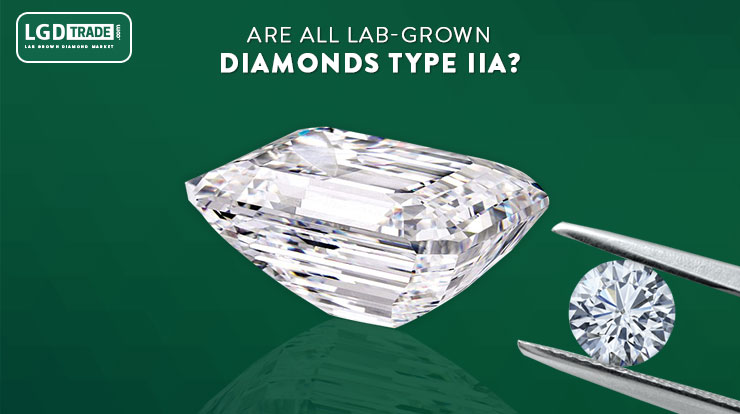
Lab-Grown Diamonds(LGD) Type IIa are the smart choice for the smart generation. Out of all the reasons people of this day and age prefer Lab Made Diamonds, one is – purity.
What is a Type IIa diamond?
Type IIa diamonds are the purest form of diamonds. They contain very minimal or absolutely zero impurities in the form of nitrogen or boron atoms in their carbon structures. They are rarely found and represent only 1 to 2% of all mined diamonds. These rare mined pieces are exceptionally colorless white stones and they also come in brown, purple, blue, or pink hue. Because of their rarity they command 5 to 15% premium when found.
Which are some of the famous Type IIa diamonds?
Some of the most famous, large Type IIa diamonds are Krupp Diamond (Elizabeth Taylor Diamond), Cullinan, Koh-i-noor and Lesedi La Rona.
- Krupp Diamond (Elizabeth Taylor Diamond)
The formerly known as Krupp diamond is a 33.19 carat, Asscher cut Type IIa diamond. It was bought by Richard Burton, a welsh actor. He and Elizabeth Taylor’s husband met in the sets of Cleopatra in Rome and were instantly smitten by each other despite both of them being married. He bought the Krupp diamond for his new wife, Elizabeth Taylor in 1968 for USD 300,000 at the NY auction. Later on, it was sold in 2011, for a staggering amount of USD 8.8 million. This diamond remains as an important part of Taylor’s collections.
- Koh-i-noor
The world-famous Koh-I-Noor which is Persian for Mountain of light was found near Kollur in southern India. It is the largest known diamond in the world; but its size has been reduced with time. Koh-I-Noor originally weighed 793 carats; which has now dropped down to 105.6 carats result of multiple attempts of cutting and polishing. The Koh-I-Noor diamond has passed multiple hands through dynasties, emperors and invasions. It eventually ended up as a British Crown Jewel and is a part of the Crown, held by Queen Elizabeth of England begotten as a result of exploiting India for 200 years.
- Lesedi La Rona
Lesedi La Rona, formerly known in media as Karowe AK6 or as Quad 1 by the personnel at the mine, is the third-largest diamond ever found, and the second-largest of gem quality. Its predecessors were non-gem black Sergio and the gem-quality Cullinan were larger. Found in the Karowe mine, (formerly called AK6) in Botswana on 16 November of 2015. British jeweler Graff got his hands on the rough diamond for $53 million in 2017. By April of 2019, Graff had cut it into one large emerald cut diamond, the Graff Lesedi La Rona, weighing 302.37 carats (60.47 g; 2.13 oz) and other 66 smaller stones.
- Archduke Joseph Diamond
The Archduke Joseph diamond is an antique cushion-shaped, stunningly colorless Type IIa diamond. The diamond originally weighed at 78.54 carats. It was bought by Molina jewelers in Arizona in the 1990s and was re-cut to 76.45 carats improving the clarity and symmetry of the diamond. The diamond was found in India’s Golconda mines. . Thus it’s D-color certification. It is cut in a rectangular cushion shape, a style of cutting that is not completely unfitting with its Indian origin. It was claimed for the first time by Austria’s Archduke Joseph August as he deposited it in a Hungarian bank vault in 1933.
Other famous Type IIa diamonds include The Star of the South, Winston legacy, Agra, Darya-I- Noor, Beau Sancy, etc.
Are all lab-made diamonds type IIa?
Yes. All lab-grown diamonds type iia are made from scratch in controlled lab environment. Unlike synthetic diamonds they are made from carbon atoms, like real diamonds. Mined diamonds are formed when dead animals are fossilized under the earth for millions of years; this evolution allows many impurities in them. This is not the case in lab-created diamonds; you get the purest form of diamond, with the exact chemical composition, in more varieties of color and shape.
Lab Grown Diamond is the most trusted and biggest lab made diamond marketplace. To know more visit www.lgdtrade.com.